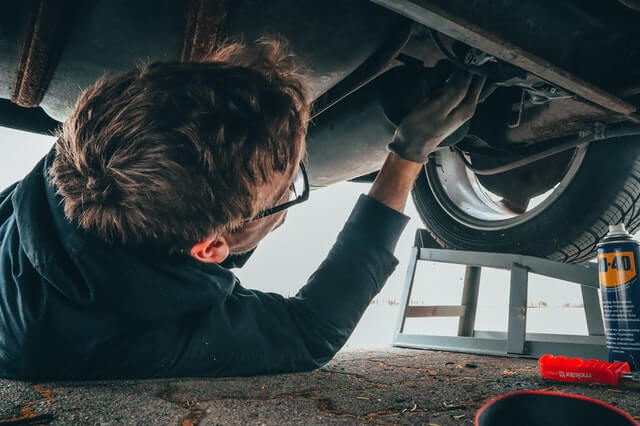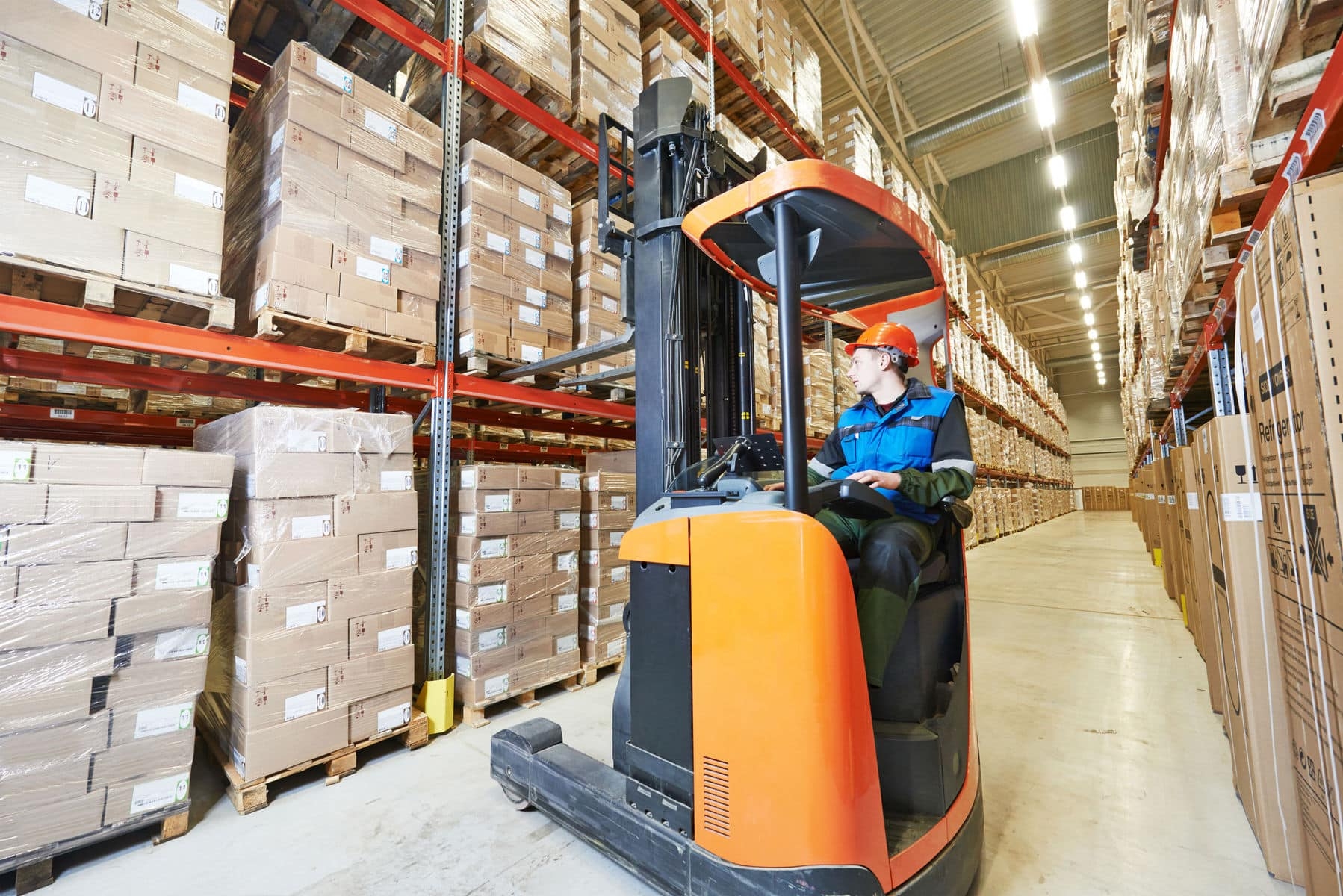 Businesses which inspect, maintain and repair motor vehicles sometimes have inspection pits on their premises. Inspection pits are narrow sunken areas in the ground which a vehicle can drive over and park so that mechanics can gain easy access under the vehicle without the need to jack or lift the vehicle up. Although inspection pits are one of the safest ways to work on diesel fuelled vehicles, they are potentially hazardous environments. It is important that any premises with an inspection pit assesses the risk of injury or death and implements control measures to reduce the risks to employees and other people. This article looks at inspection pit safety, significant hazards and the control measures that motor vehicle repairs could implement.
Businesses which inspect, maintain and repair motor vehicles sometimes have inspection pits on their premises. Inspection pits are narrow sunken areas in the ground which a vehicle can drive over and park so that mechanics can gain easy access under the vehicle without the need to jack or lift the vehicle up. Although inspection pits are one of the safest ways to work on diesel fuelled vehicles, they are potentially hazardous environments. It is important that any premises with an inspection pit assesses the risk of injury or death and implements control measures to reduce the risks to employees and other people. This article looks at inspection pit safety, significant hazards and the control measures that motor vehicle repairs could implement.
Inspection Pit Safety & People Falling into Unprotected Pits
There is a significant risk of a fall from height when working with an open inspection pit. Unfortunately falls into inspection pits are common. A recent press release from the HSE details a prosecution of a company following an accident in September 2018 when an employee fell 5 feet into an inspection pit. The employee sustained serious head and shoulder injuries. The HSE investigation concluded that the pit did not have any physical measures such as barriers or covers in place. The employer was fined £10,000 and ordered to pay costs of £10,000.
Visitor Health & Safety
It is not just employees who could fall into an unprotected pit. Anyone who visits a work premises with an unprotected pit could potentially fall into it if adequate preventative inspection pit safety measures are not in place. In fact, anyone who is unfamiliar with the work premises are more at risk because they may not even realise there is an inspection pit on the premises. An example of such an accident is when a Council was fined £150,000 and ordered to pay £65,000 costs in 2018 after a visitor at one of their sites fell into an inspection pit and sustained head injuries.
Effective Control Measures For Vehicle Inspection Pits
When considering the control measures to introduce to prevent a fall from height, it is important to consider the hierarchy of controls set out in The Work at Height Regulations 2005. The Work at Height Regulations 2005 outlines measures which employers need to consider in order of effectiveness. The order is as below:
- Avoid working at height where it is reasonably practicable to do so.
- Where working at height cannot be avoided, implement control measures to prevent falls.
- Minimise the distance and consequences of a fall.
If the use of inspection pits cannot be avoided or your risk assessment demonstrates that using an inspection pit is the safest way of doing the work, control measures you could consider to prevent a fall include:
- Restricting access to the area where the inspection pit is located to only those who need to be there.
- Use guard rails, chains or extendible barriers around the edge of the pit.
- Install a moveable bridge across the pit with handrails.
- Place a cover over the pit when it is not in use.
- When the pit is in use, if the vehicle is shorter than the length of the pit, cover any area of the pit which is not covered by the vehicle.
- Ensuring the flooring around the pit is slip resistant.
- Painting chevrons on the floor around the pit and painting walkways around the workshop so that people stay in the designated walkways.
- Installing warning signage such as ‘Danger Open Pit’ to all access points.
- Keeping the area tidy and clean up spillages immediately to reduce the risk of a slip, trip or fall into the pit.
- Ensure the area is adequately lighted so that people can see the pit. Also use pit lighting during opening hours.
Slipping on Access Steps
A significant number of accidents occur as a result of people slipping on access steps in and out of pits. If the pit does not have a handrail or if oil has been spilled on the steps, this would increase the risk of someone slipping on the access steps.
Control measures to consider reducing the risk of a slip could include:
- Installing a handrail (permanent or removable whichever is the most suitable).
- Painting the steps with anti-slip paint.
- Ensuring employees are issued and wear slip resistant safety footwear.
- Ensuring spillages on the steps are cleaned up immediately.
Fire or Asphyxiation due to Gases, Vapours or Fuel Release in the Pit
Due to the confined space of inspection pits, they are likely to have poor natural ventilation. This combined with the release of any high flash point substance could cause a fire, explosion or asphyxiation risk.
Control measures which motor vehicle repair businesses could implement include:
- Work on non-diesel fuel tanks, fuel lines and hot work is not carried out on or near any fuel tanks or fuel lines in a vehicle pit.
- Refrigerant is drained from air conditioning units away from the pit area prior to commencing pit work.
- Not permitted welding in vehicle pits without using suitable extraction equipment.
- Fixed lighting is provided that is suitable for explosive atmospheres.
- Portable hand lamps are of a suitable construction to prevent ignition in flammable atmospheres.
- Do not store anything containing LPG near the pit.
A Vehicle or Object Falling into the Pit
There is a risk of vehicles or objects falling into inspection pits. Control measures to reduce this risk could include:
- Vehicles are not driven over pits whilst employees are in the pit.
- All driving onto inspection pits is done by trained and competent drivers and is marshalled by a trained and competent person.
- Only suitable vehicles are allowed onto the pit area.
- Items and tools must not be left at pit edges.
Head Injuries from Contact with a Vehicle Over the Pit
Another hazard with inspection pits is the risk of employees working in the pit banging their head on the vehicle above them. An example of a control measure a garage or workshop could introduce to reduce the risk is providing suitable head protection, such issuing bump caps and enforcing the wearing of them when working underneath raised vehicles.
Inspection Pit Safety | Other Considerations
- Ensure the pit has a safe means of entry and exit. As well as having one fixed point of entry and exit, your risk assessment should look at whether you need an additional separate means of escape if the fixed entry / exit point became blocked.
- When considering inspection pit safety control measures it is important to consider whether the control measures you introduce could also cause a hazard, for example, fitting and removing covers over the pit could create a low risk of a manual handling injury and also working closely to the edge of the pit to fit and remove a cover could lead to a fall into a pit. This needs to be considered in your risk assessment.
- When carrying out your risk assessment, consult with employees for their opinions and ensure employees are briefed on the findings of the risk assessment.
- Ensure employees receive adequate information, instruction and training on the risks and the control measures they need to follow. Also carry out regular refresher training.
- It is important that Management carry out regular routine inspections to ensure that control measures are being adhered to.
If you are a Wirehouse client and would like assistance with completing your risk assessments and deciding on the most appropriate control measures, please contact the Health and Safety Advice Team. If you are not a Wirehouse client and need advice and guidance surrounding inpsection pit safety and other safety issues affecting your business, get in touch with our Health and Safety Consultants today.
Article written by Helen Liptrot, Wirehouse Health and Safety Advisor





